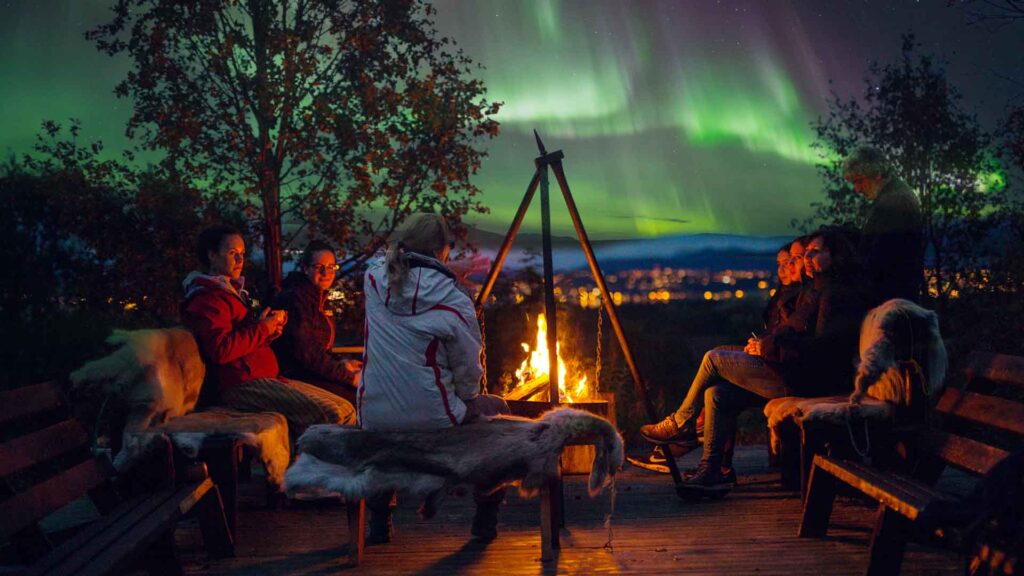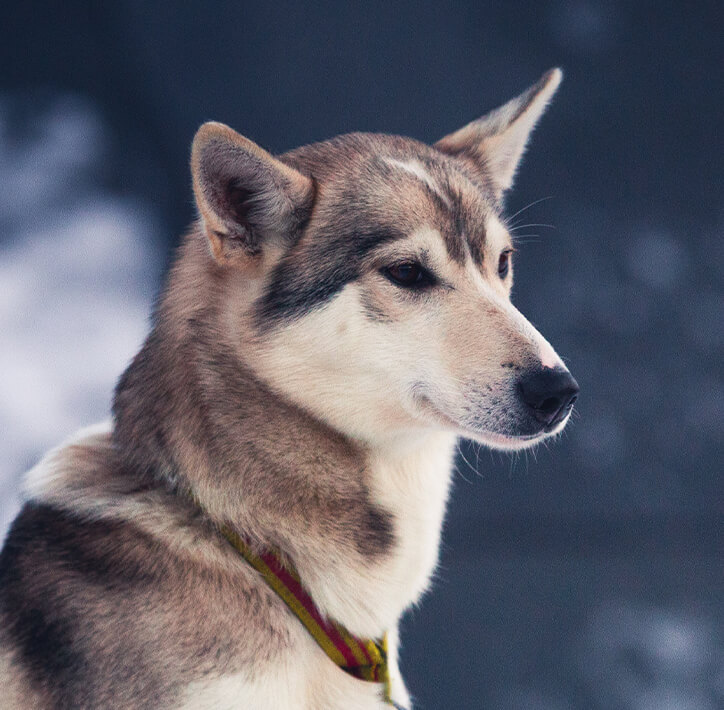- Gintaré Turskyté
- Editor
- Send me an e-mail
One of the most common questions we receive from guests upon entering our dog yard is, “So, tell me, which one is the real husky?” We understand the confusion, as our dogs don’t resemble the ones typically seen when you search “husky” on Google. The dogs you often encounter in cities or online are Siberian Huskies. While Siberian Huskies, particularly those from working lines, exhibit a wide range of appearances and come in various colors, they are primarily recognized for their dense, soft coat and distinctive blue eyes.
The straightforward answer to the question above is that all our dogs are indeed huskies, but specifically, they are Alaskan Huskies! An Alaskan Husky is a working type of dog bred primarily for endurance purposes. Unlike purebred dogs, they are not officially recognized due to the lack of a standard for their appearance. Alaskan Huskies can vary in size, shape, and color, showcasing unique individuality such as standing or floppy ears. The essence of an Alaskan Husky lies in being the ultimate sled dog, ready to cover great distances in challenging winter conditions.
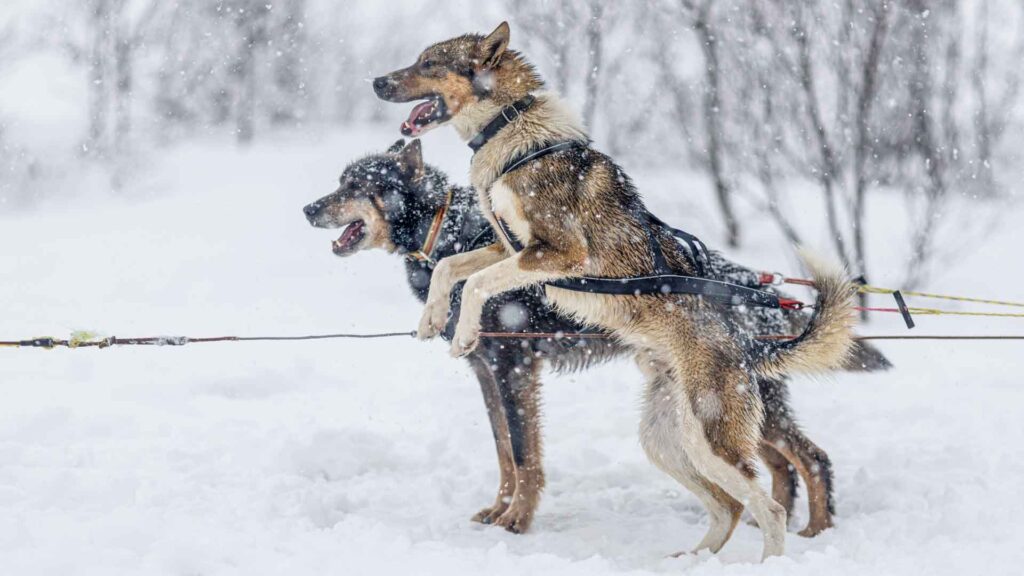
When breeding our dogs, we prioritize traits essential for their role—high running drive, well-built athletic bodies, good appetite, tough heads, and amiable personalities. Opting for appearance-based breeding would compromise these crucial working features.
Looks are not a priority for us; we cherish the unique individuality of each dog. Breeding based on appearance would compromise the essential characteristics crucial for sled dogs. Despite their varied appearances, our dogs share several common features.
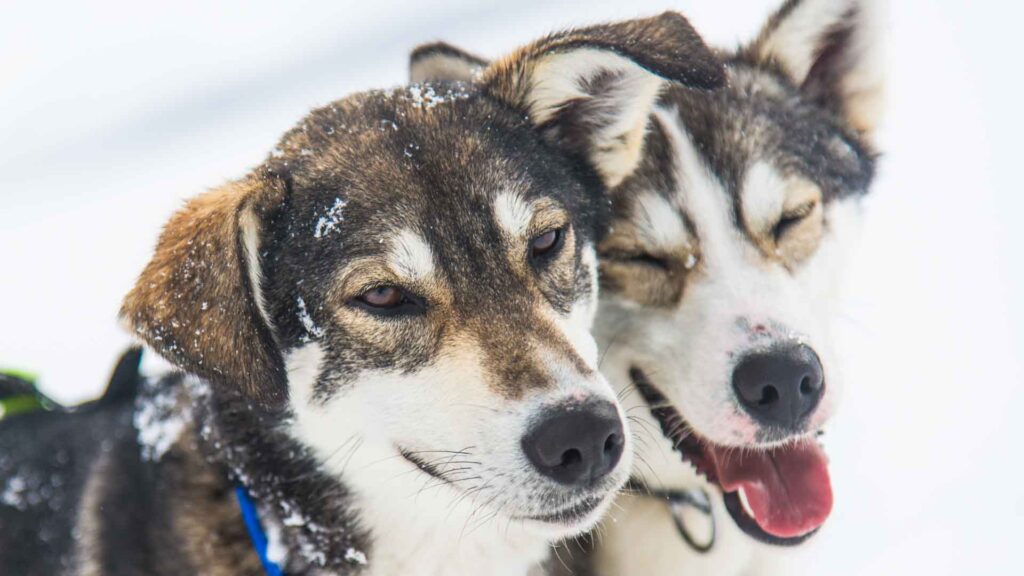
Professional athletes. Our dogs are professional athletes, capable of covering significant distances while pulling weight. our well-trained dogs, who lead tours for our guests, can easily cover up to 50 km in a day, with peak fitness racing dogs covering an impressive 100 km/day in favourable conditions. The distance-specialist teams have completed the Finnmarksløpet – a 1200 km race – in just 6-7 days. When it comes to covering extensive distances in a short time, the endurance of Alaskan Huskies is unmatched, making them unrivalled in their field.
Special dietary needs. The demanding training conditions in cold weather make Alaskan Huskies burn an extraordinary amount of calories, so they need a totally different diet than other dogs. While an average 25 kg pet dog might consume around 1500 calories per day, a racing sled dog requires approximately 12,000 calories daily equivalent to devouring 24 McDonald’s Big Macs. While many other breeds might get sick from such a hefty amount of food, Alaskan Huskies have digestive systems that can handle it—they eat, take a break, and are ready to go again.
Double coat. Despite variations in fur density, all Alaskan Huskies have a double coat, well-suited for winter conditions. They also have furry toes that keep their paws warm. During rest, they snuggle up and get comfy, tucking their nose into their tail, creating warmer air as they breathe.
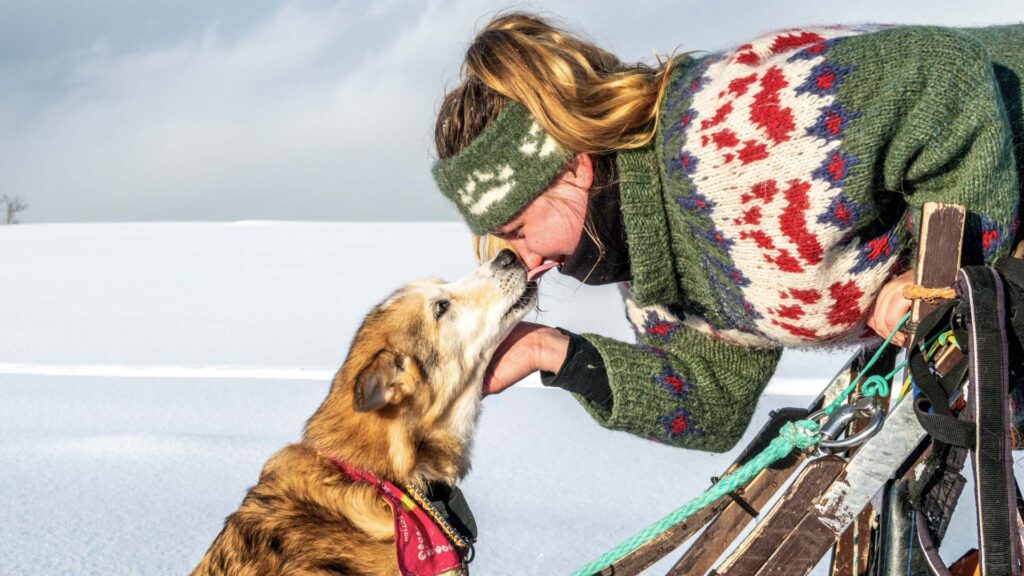
Human oriented personalities. Not just athletically adept, Alaskan Huskies are inherently human-oriented and friendly. In historical contexts where sled dogs served as primary means of transportation, cooperation with humans was paramount. This history has left them naturally obedient and cooperative, making them exceptional pets as they retire in their older age.
So are they the real huskies? Absolutely! They might not all have matching blue eyes or identical faces, but they nail the purpose huskies are bred for. They’re top-notch compact sled dogs, with fantastic endurance. These dogs were developed to work together, pulling light loads at moderate speeds across vast icy terrains. They’re the real deal.

